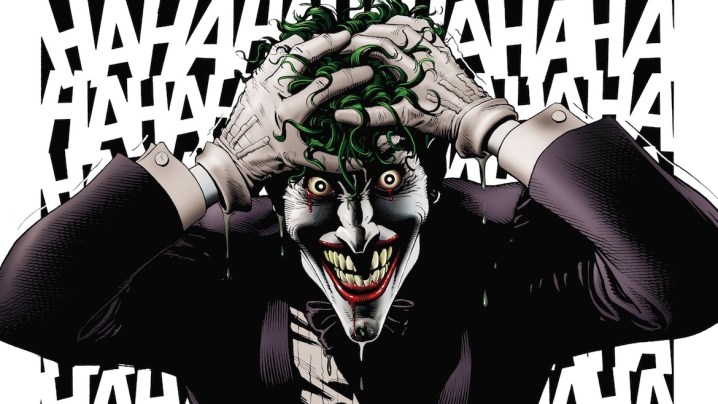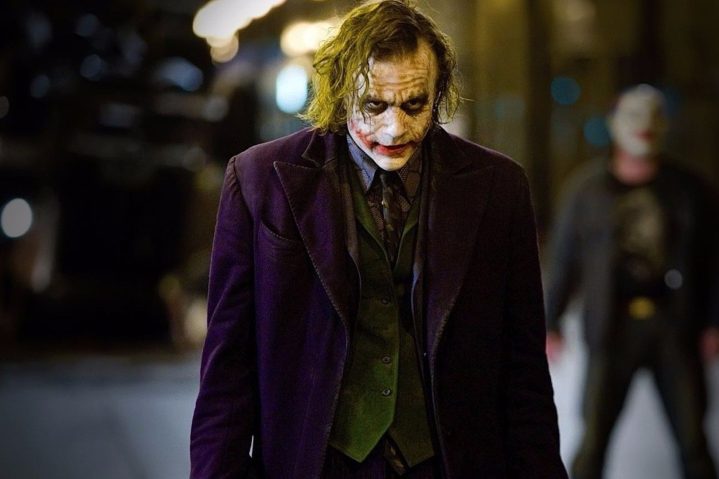
This weekend, Joaquin Phoenix returns to his Oscar-winning role as Arthur Fleck, aka the Joker, in Todd Phillips’ Joker: Folie à Deux. Ostensibly a sequel to Joker, Folie à Deux is less a continuation of the story begun in the 2019 film and more a denouement of it. It takes big swings, but it seems to have lost the plot. That’s largely because, like its predecessor, it lacks a basic understanding of the titular character. The critical and expected commercial underperformance of Folie à Deux hints that Hollywood has done what it always has and milked every last drop from the Joker cow.
Once upon a time, the Clown Prince of Crime was an icon of the comic book world, a titan of entertainment with more lives than Catwoman. People used words like “complex” and “three-dimensional” to describe him, separating him from the cheap villains he once shared the spotlight with. A few years ago, the Joker was a precious role that earned Oscars for his performers and elevated any project it was a part of. Flash-forward to now, and what you have is a ghost of what once was, a joke that has been told so many times that it no longer has a punch line. Because, now that the Joker has gone from villain to antihero to champion of the oppressed, what’s left for him to be other than a joke himself?
Let the Joker laugh

To talk about Batman is to talk about the Joker. The character debuted in the first issue of the Batman comic book in 1940 and has remained a consistent aspect of the hero’s history. His backstory, motives, and demeanor have changed over the years, but his animosity toward the Caped Crusader has remained. The Joker is among the most fluid characters in comic book history: he is whatever he needs to be, depending on the story. In The Killing Joke, he is a broken misanthrope looking to prove everyone can be just as bad; in A Death in the Family, he’s a cunning terrorist with the intelligence to outsmart the World’s Greatest Detective; in The Long Halloween, he’s a rabid clown using laughing gas to commit his crimes.
This malleability has allowed Joker to rise in popularity as not only Batman’s archnemesis, but arguably the best supervillain in comic book history. Whereas other villains have more defined personalities, Joker is everything and nothing; he can be a petty, street-level criminal and a manipulative crime lord from one panel to the next. In more ways than one, Joker is an idea rather than a defined character. His backstory changes as often as the flower on his lapel, with his insanity and obsession with Batman being two of the three constants in his stories.

The third element crucial to the Joker’s characterization is in the name itself: he laughs. The Joker is in on the joke, which also changes depending on the narrative. Sometimes, he laughs at the knowledge that everyone is as bad as he is; other times, the laugh comes from knowing Batman is his soulmate and the two are destined to be in each other’s stories forever, which, believe it or not, is his version of happily ever after. However, Joker always laughs: he’s a clown, a trickster, a perversion of humor that’s nonetheless humorous.
The decline in the Joker’s public persona can be traced back to this basic quality all but disappearing in recent years. The Joker is supposed to laugh out of genuine, albeit deranged glee. He truly finds everything funny; the world’s inherent chaos and cruelty are entertaining to him. It’s the ultimate source of comedy, one big, perverse joke that everyone is a part of.

Yet, recent versions of the Clown Prince of Crime use laughter more as an intimidation tool rather than an expression of the Joker’s inner turmoil. To me, this choice speaks to a basic lack of understanding of who the Joker is, what his purpose is, and where he comes from. How can you be the Joker if you don’t laugh? As silly as it sounds, it’s seemingly not simple enough for the entertainment honchos to understand.
The Rorschach test

It’s not an overstatement to say DC, on the big screen, is kind of embarrassed by its source material. Whether it’s The Penguin changing the main character’s name to sound more “grounded” or Todd Phillips changing the DNA of the Joker to turn him into a champion of the disenfranchised, DC is very much ashamed of being based on a comic book property, and we can tell. However, in its attempt to turn Batman and everything relating to him into the hyperrealistic tone established by Christopher Nolan’s Dark Knight trilogy, each new adaptation offers very little to the Batman mythos; on the contrary, it only takes away from it.
There is an inherent silliness that comes with being a comic book property, a suspension of disbelief you must have to believe that a traumatized orphan can dress like a bat and punch criminals with his bare hands every night. And yet, we keep pursuing it. We use phrases like “a crime drama disguised as a superhero movie,” as if being a superhero movie was an insult, a flaw to overcome to become a “serious movie.” This same mindset can be seen in the Joker’s adaptations, especially those coming after Heath Ledger’s portrayal.
Unfortunately, the idea of the Joker as a disturbing anarchist and revolutionary was only reinforced by Joaquin Phoenix’s Oscar-winning role in Joker, which I think we can now all agree was the first nail in the character’s coffin. Simply put, Phillips and Phoenix’s version is not the Joker. There are only so many changes you can make to a character before you turn it into a completely different thing, and Phillips altered the Joker’s DNA to the point where the protagonist of his movie isn’t the Clown Prince of Crim,e but a Scorsese reject desperate to stand beside Travis Bickle. Phillips isn’t just embarrassed by the Joker’s comic book origins; he outright rejects them, using the name for its recognition to deliver a pale imitation of The King of Comedy.
In Phillips’ hands, the Joker lived long enough to become the hero, an ugly and unhinged twist that should have never happened. The Joker isn’t interesting because of the point he’s making; he’s interesting because he’s making none. So why on Earth would you turn him into an antihero meant to appeal to the absolute worst part of society?

Phillips turned the Joker into Watchmen‘s Rorschach, and wow, was that a baffling and absurd decision! Like Alan Moore before him, Phillips understood what he had done too late, which explains why he all but tears his movie apart in the sequel. Joker: Folie à Deux is the closest thing to a middle finger that a mainstream movie can get and will surely alienate everyone, from those who loved its predecessor to those who utterly hated it, which begs the question: What the hell are we doing here?
The desire to outdo Ledger and Phoenix led to the ugly mess that was Matt Reeves’ baffling take on the Joker in The Batman. If Ledger’s Joker was physically scarred and Phoenix’s was emotionally so, then the only logical course of action was to make Barry Keoghan’s outright deformed. This mindset to take things to the extreme is profoundly misguided, especially considering we’re talking about a character who’s already teetering on the edge of extremism.

Ledger’s Oscar-winning take on the villain worked because it was precisely that: another take on a well-known character. What’s wrong is that every single actor to play the Joker after him is chasing his ghost, and it’s time to admit they’ll never catch up to him. What Ledger did was one of a kind, a once-in-a-lifetime performance that will never be replicated. Nor should i be. The mistake following his generation-defining work was treating it as the blueprint rather than the lightning-in-a-bottle moment it was.
Oh, puddin’ …

It’s too early to call Joker: Folie à Deux a flop, but it’s certainly not earning Phillips any more Oscar love. Indeed, the director has been going around telling everyone who’ll listen how he’s done with DC, and honestly, good for him — at least he gets to walk away from it all while still being able to call himself an Oscar-nominated director. But where does that leave the Joker? Well, he’ll always be famous. A character like him will always have fans, no matter how many bad stories he stars in. But what about his cinematic future?
It’s safe to say that Hollywood has officially run out of ideas for the Joker. By trying to copy one actor’s career-defining performance, the industry turned Joker into something he should’ve never been: a symbol. Some characters can be more than what they seem, figures who can maybe inspire or terrify, confuse or enthrall. The Joker is not one of those; he’s an idea, a thought in someone’s head, ever-changing and never defined.
I’m not saying Hollywood will stop featuring the Joker, but I am saying perhaps it should. After all, there is only so much you can say with a character that wants to say so little. You already turned him into the leader of the single worst side of the internet, only to later tear him down with musical glee. What comes next? Take him back to his roots, let him tell a joke and shoot some laughing gas. In short, let the Joker be the Joker, and stop trying to politicize him or turn him into this generation’s Taxi Driver. The Joker doesn’t need that baggage. What he does need is a good laugh — and God knows he hasn’t had one in years.
Joker: Folie à Deux is now playing in theaters worldwide.
Services Marketplace – Listings, Bookings & Reviews
